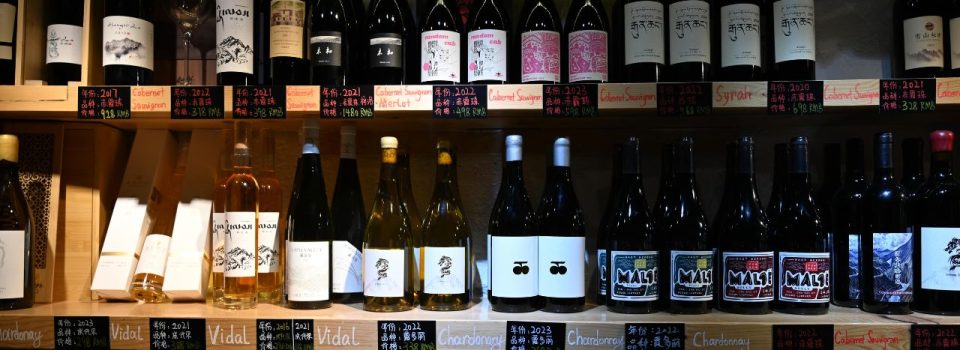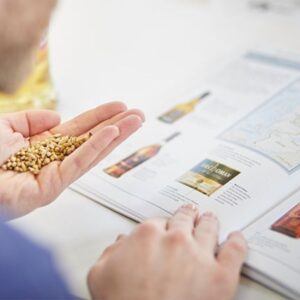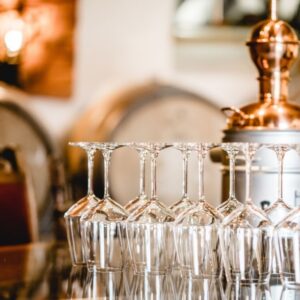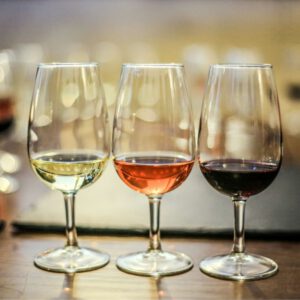Long overshadowed by its reputation for tea 茶 and traditional spirits like the famous Baijiu 白酒, China is now one of the most dynamic wine-producing countries in the world—and a rising force on the global wine scene.
Thanks to massive investments, diverse terroirs, the arrival of international expertise, and a strong ambition to produce world-class wines, Chinese wines are gaining increasing recognition among wine professionals and enthusiasts alike.
The development of China’s wine industry is both rapid and fascinating.
While Eurasian grapevines were introduced over 2,200 years ago, it wasn’t until the 1980s that China truly began modern wine production. Today, China boasts one of the largest areas of planted vineyards in the world.
What sets the country apart is its extraordinary geographic and climatic diversity—from the arid deserts of the west to the Himalayan foothills and the coastal plains—each wine region offers a unique expression, influenced by local traditions and international grape varieties.
Major players in the wine world such as LVMH, Lafite Rothschild, and Moët & Chandon have launched high-profile projects in China, joining the ranks of ambitious and fast-growing local wineries.
In this article, we’ll explore the key wine regions of China, its most emblematic grape varieties, and the wineries shaping the future of Chinese wines.
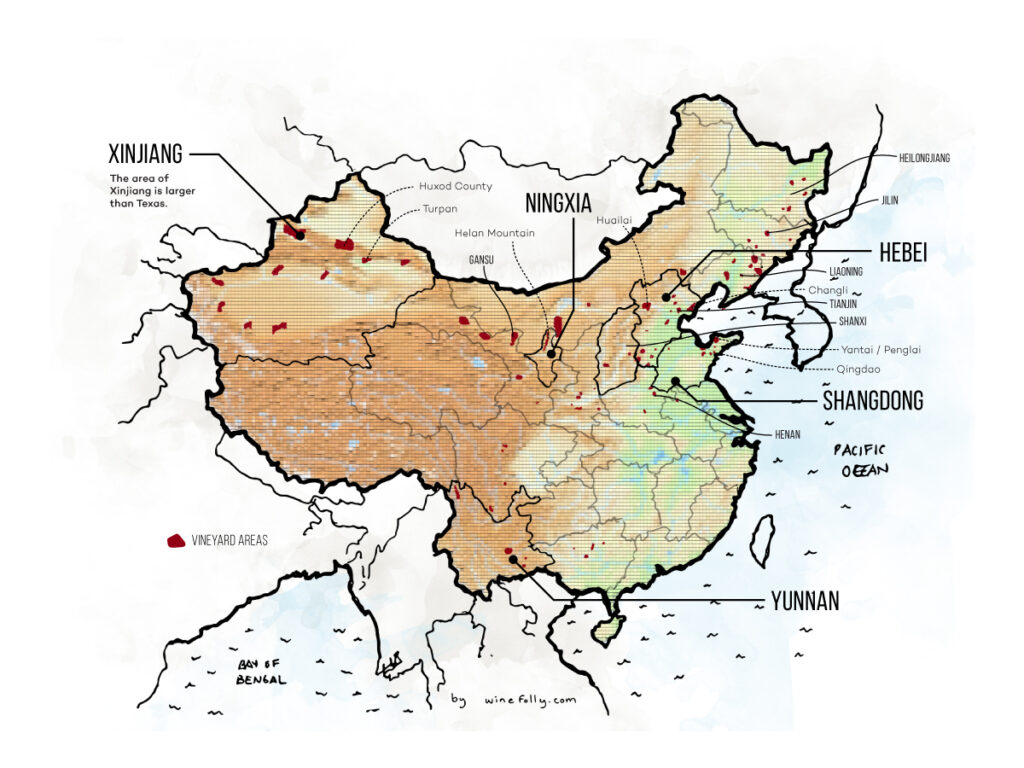
1. The Major Wine Regions of China
In this first part of our exploration, we take you on a journey through China’s leading wine-producing regions to better understand their climates, grape varieties, and standout wineries.
China is home to 12 wine regions, five of which are recognized for the quality of their production.
1.1. Ningxia 宁夏 (Helan Mountain East)
Located in north-central China along the edge of the Gobi Desert and the foothills of the Helan Mountains, Ningxia enjoys a continental climate with cold winters and hot summers. Irrigation—mainly from the Yellow River—is essential.
Ningxia is the second-largest wine region by production volume and is home to around 200 wineries.
In 2013, the region introduced its own classification system, inspired by Bordeaux’s 1855 model. Updated every two years, it highlights the top producers in tiers. Currently, 35 wineries are included.
Main grape varieties:
Red: Cabernet Sauvignon, Merlot, Cabernet Gernischt (often identified as Carménère)
White: Chardonnay
Flagship wineries:
- Silver Heights: a family-run winery acclaimed for its elegant reds, led by Emma Gao.
- Chateau Changyu Moser XV: a Sino-European venture combining Austrian tradition and Chinese terroir.
- Kanaan Winery: known for fruity, balanced Cabernet Sauvignon.
Good to know:
Ningxia is often dubbed the “Bordeaux of China” due to the quality of its blends.
In 2011, during the “Bordeaux vs Ningxia” blind tasting competition, Ningxia wines outperformed several prestigious Bordeaux crus, confirming the region’s global potential.
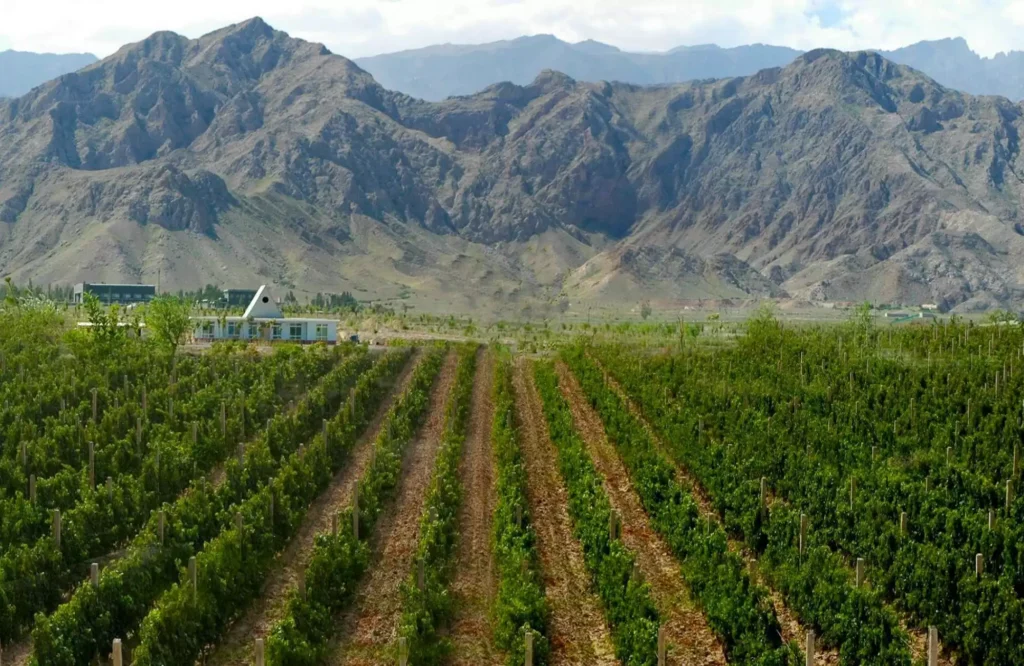
1.2. Shandong 山东 (Shandong Peninsula)
Located on China’s eastern coast near Qingdao, Shandong enjoys a temperate, maritime-influenced climate with higher humidity than other regions—making fungal disease management crucial.
Main grape varieties:
Red: Cabernet Sauvignon, Merlot
White: Chardonnay, Riesling
Flagship wineries:
- Château Lafite – Domaine Long Dai: a premium project by Domaines Barons de Rothschild (Lafite)
- Great Wall Winery: a volume-driven major player also active in other regions
Good to know:
Shandong is China’s largest wine-producing region by volume, accounting for nearly 40% of total output. While quality has historically varied, many wineries are now focusing on more rigorous viticultural practices to elevate their standards.
1.3. Xinjiang 新疆
In China’s far west, Xinjiang’s desert plains are characterized by an arid, continental climate with wide diurnal temperature ranges.
Main grape varieties:
Red: Cabernet Sauvignon, Syrah
Sweet: Muscat
Flagship wineries:
- Tiansai Vineyards: praised for its expressive and structured Syrah.
- Les Champs d’Or: a premium estate with international ambitions.
Good to know:
Thanks to its dry and sunny climate, Xinjiang produces grapes with high sugar and aroma concentration. Wines here are often bold, deeply colored, and suitable for aging.
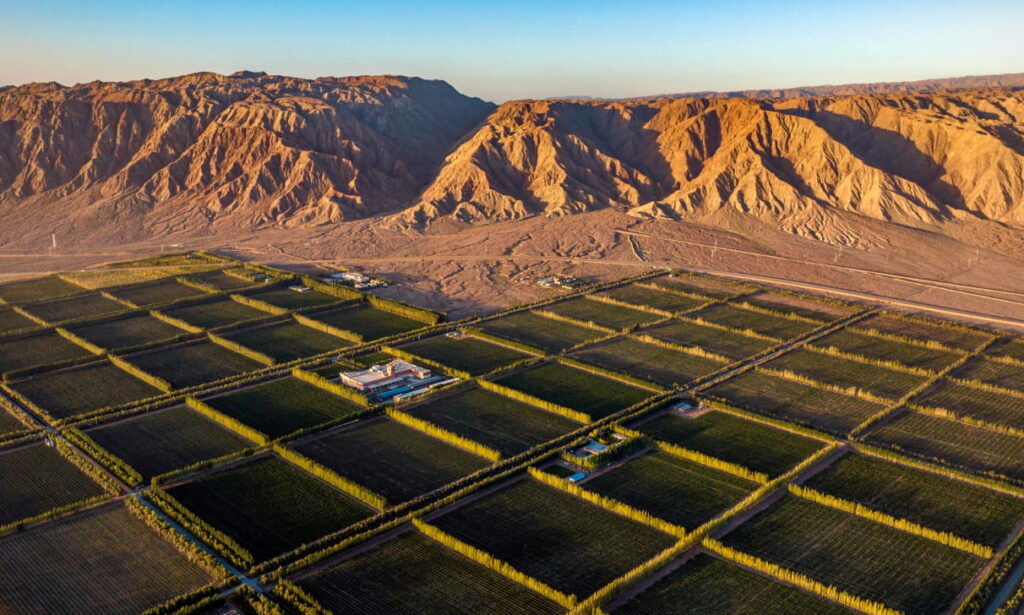
1.4. Hebei 河北 (Beijing Region)
Northeast of China and surrounding the capital city, Hebei has a continental climate with cold winters, hot summers, and high humidity in summer.
Main grape varieties:
Red: Cabernet Sauvignon, Merlot, Marselan
Flagship wineries:
- Domaine Franco-Chinois: founded with French technical expertise, specializing in Marselan.
- Chateau Changyu AFIP Global: a wine tourism complex and producer of approachable wines.
Good to know:
Hebei is the second-largest region by volume. Many projects here blend local know-how with international expertise to craft modern wines.
1.5. Yunnan 云南 (Shangri-La Region 香格里拉)
In southwestern China, at elevations between 2,200 and 2,600 meters near the Himalayas, Yunnan’s Shangri-La region offers intense sunshine, wide diurnal shifts, and low disease pressure thanks to its high altitude.
Main grape varieties:
Red: Cabernet Sauvignon, Merlot, Petit Verdot, Cabernet Franc
White (experimental): Chardonnay, Chenin Blanc
Flagship wineries:
- Ao Yun: an ambitious LVMH project aiming to craft a Grand Cru for Asia.
- Sun God Winery: emerging quality-driven initiatives.
- Canaan Winery (Shangri-La project): small-scale, elegant wines.
Good to know:
Yunnan wines stand out for their freshness, finesse, and almost mystical character—reflecting the high-altitude terroir. Vines are often hand-tended on terraces by Tibetan communities.
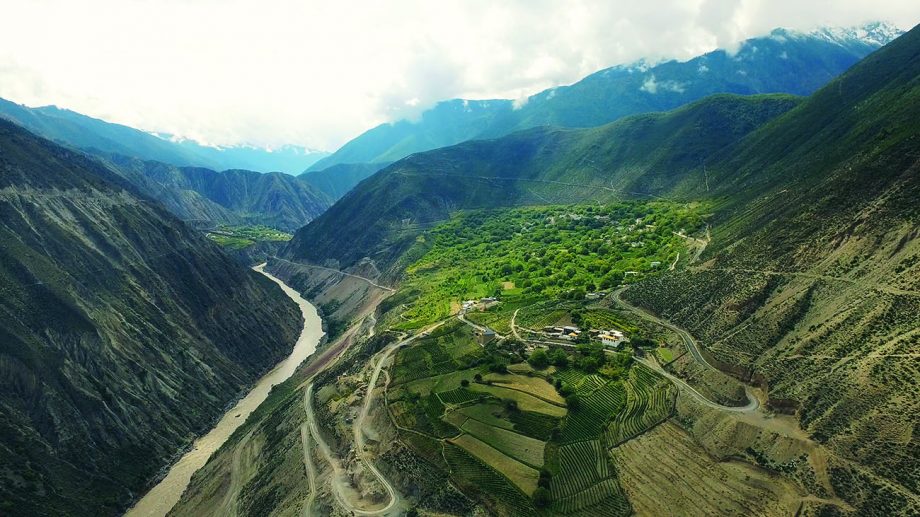
1.6. Other Noteworthy Regions
- Shanxi: A plateau near Beijing with promising clay soils for Chenin Blanc, Merlot, and Cabernet Sauvignon.
- Liaoning: Northeastern China, known for ice wines made from Vidal.
- Heilongjiang: On the Russian border, also producing ice wines.
- Tianjin: A historic region near Beijing, recognized for sweet wines from Muscat.
- Jilin: Known for its ski resorts, this region produces cold-resistant Amur (Vitis amurensis) grapes.
- Gansu: East of Ningxia, this region faces transport challenges.
- Henan: A very small region with a challenging, hot and humid climate.
2. Grapes Grown in China: A Blend of Tradition and Innovation
The rise of wine in China was initially built around international grape varieties.
Even today, most of the country’s vineyards are planted with a few star grapes.
But we are also witnessing promising experiments with lesser-known or climate-resilient varieties better suited to China’s extreme and diverse growing conditions.
2.1. Leading Red Grapes
Cabernet Sauvignon 赤霞珠 is by far the most widely planted grape in China.
It produces structured, often oaked wines that are highly popular in premium blends. You’ll find it in all the major wine regions, including Ningxia, Hebei, and Xinjiang.
Merlot 美乐 is commonly used to add roundness and fruitiness to blends, especially in cooler regions.
Cabernet Gernischt 蛇龙珠, introduced in the 19th century and long believed to be a local clone of Cabernet Franc, is now considered a synonym for Carménère.
This emblematic Chinese grape is mainly found in Shandong and Hebei and yields rich, peppery wines with classic vegetal notes.
Marselan 玛瑟兰, a cross between Cabernet Sauvignon and Grenache originating from southern France, is gaining popularity—particularly in Hebei—thanks to its resilience in harsh climates and appealing aromatics. It produces supple, elegant wines with deep color.
Petit Verdot and Cabernet Franc are often included in premium blends (e.g., Ao Yun, Long Dai) to enhance complexity and aging potential.
Syrah 西拉, successfully trialed in Xinjiang (notably at Tiansai Vineyards), is used to produce bold, spicy wines with great structure.
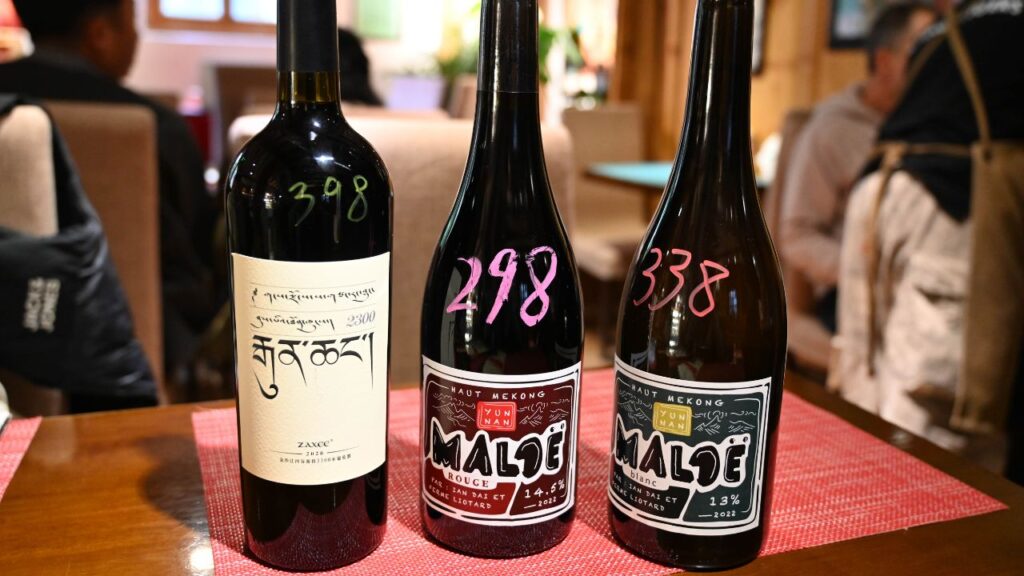
2.2. Emerging White Grapes in Chinese wines
Chardonnay 霞多丽 remains the international benchmark white grape.
In China, it’s primarily used to craft dry white wines or sparkling wines—particularly in Shandong.
Riesling 雷司令, planted in cooler zones or at higher altitudes, delivers fresh, floral white wines with vibrant acidity.
Chenin Blanc, Sauvignon Blanc, and Sémillon are being explored on a smaller scale, especially in regions like Yunnan and Shandong, showing promising aromatic profiles and freshness.
3. Iconic Chinese Wineries
China’s wine scene is evolving rapidly, and several estates have established themselves as standard-bearers of quality.
Here’s a selection of must-know wineries if you want to explore the best of Chinese fine wine.
3.1. Ao Yun (Yunnan)
This prestigious estate, owned by luxury group LVMH, is located at over 2,200 meters above sea level, on the Himalayan foothills.
Ao Yun is known for its signature blend led by Cabernet Sauvignon.
Harvesting is done by hand on steep terraces, and the winemaking process is carried out in micro-parcels to highlight the nuances of each plot.
The estate produces high-end Chinese wines with elegant, internationally appealing styles.
Prices are high, and bottles are highly sought after by collectors.
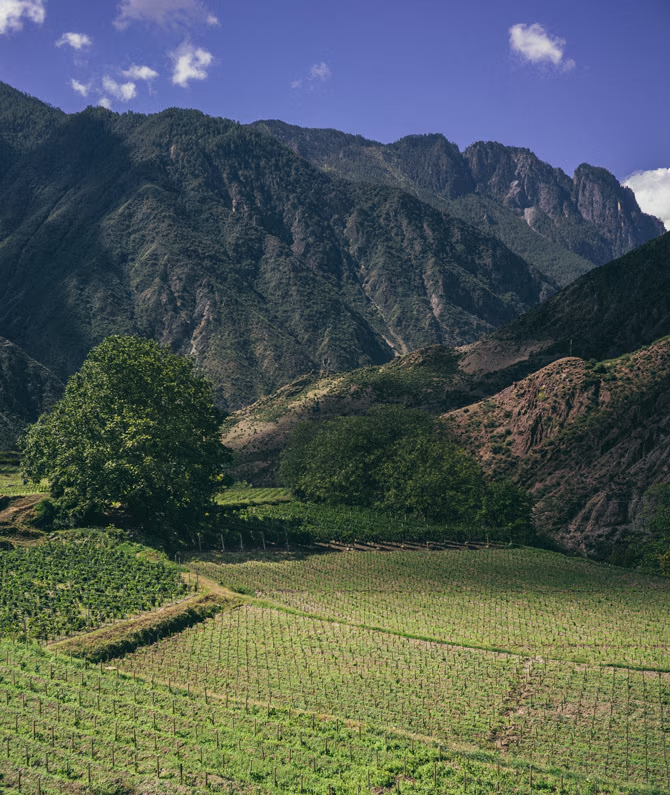
3.2. Domaine Long Dai (Shandong)
Owned by Domaines Barons de Rothschild (Lafite), Long Dai is located on the Shandong Peninsula.
Key grapes include Cabernet Sauvignon, Marselan, and Cabernet Franc, with the ambition to craft a Chinese Grand Cru with the same rigor as Bordeaux’s best.
Its premium positioning targets both affluent Chinese consumers and the international fine wine market.
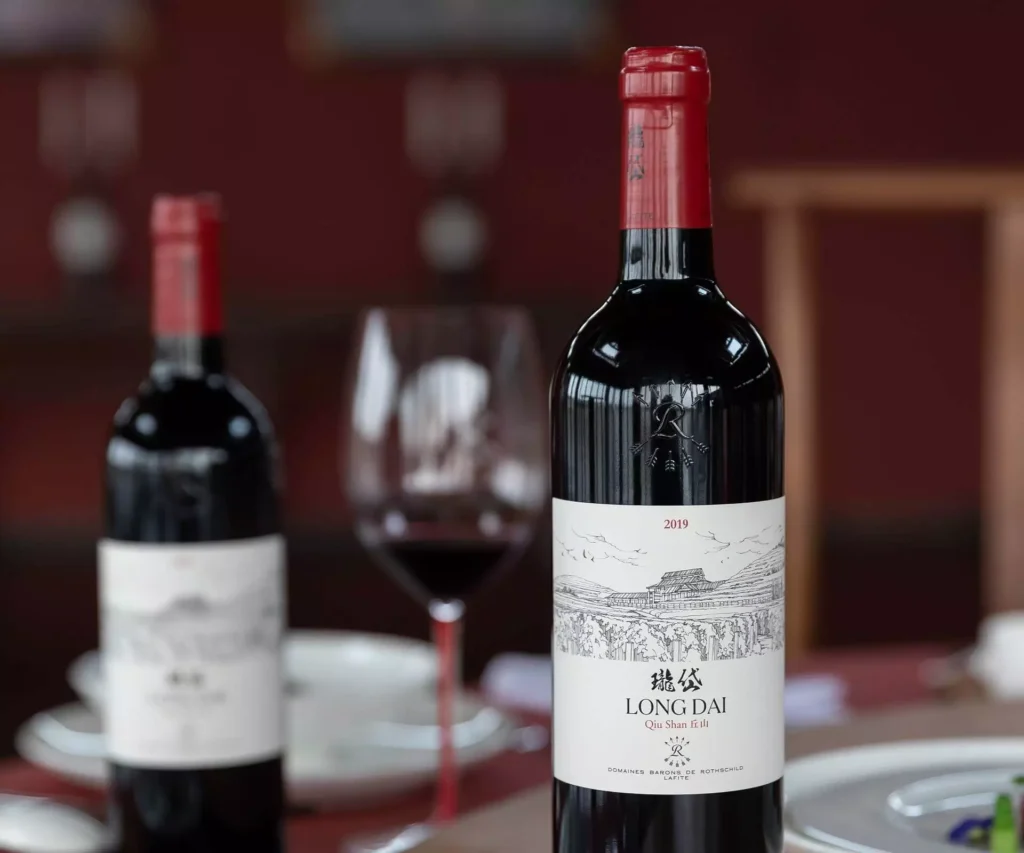
3.3. Silver Heights (Ningxia)
Founded by Emma Gao, one of China’s rising stars in winemaking, Silver Heights is located in the Helan Mountains in Ningxia.
The estate is known for producing elegant red wines using organic and biodynamic practices.
It remains a family-run winery focused on finesse, minerality, and terroir expression.
3.4. Tiansai Vineyards (Xinjiang)
In the Gobi Desert, Tiansai Vineyards produces terroir-driven wines that are already praised by critics.
The main varieties include Syrah and Cabernet Sauvignon, resulting in powerful yet balanced wines, thanks to the extreme climate and high-altitude vineyards.
3.5. Domaine Franco-Chinois (Hebei)
This premium estate was born from a collaboration between Chinese investors and French wine experts.
Focused on quality and European-inspired style, it specializes in refined, elegant Marselan, produced using organic methods.
3.6. Château Changyu Moser XV (Ningxia)
A joint venture between Changyu, China’s oldest wine producer, and Lenz Moser of Austria, Château Changyu Moser XV exemplifies the new face of Chinese wine.
Cabernet Sauvignon is the flagship grape, vinified using European techniques with imported barrels.
The estate also features stunning architecture and a strong emphasis on wine tourism, offering a gateway into the world of modern Chinese winemaking.
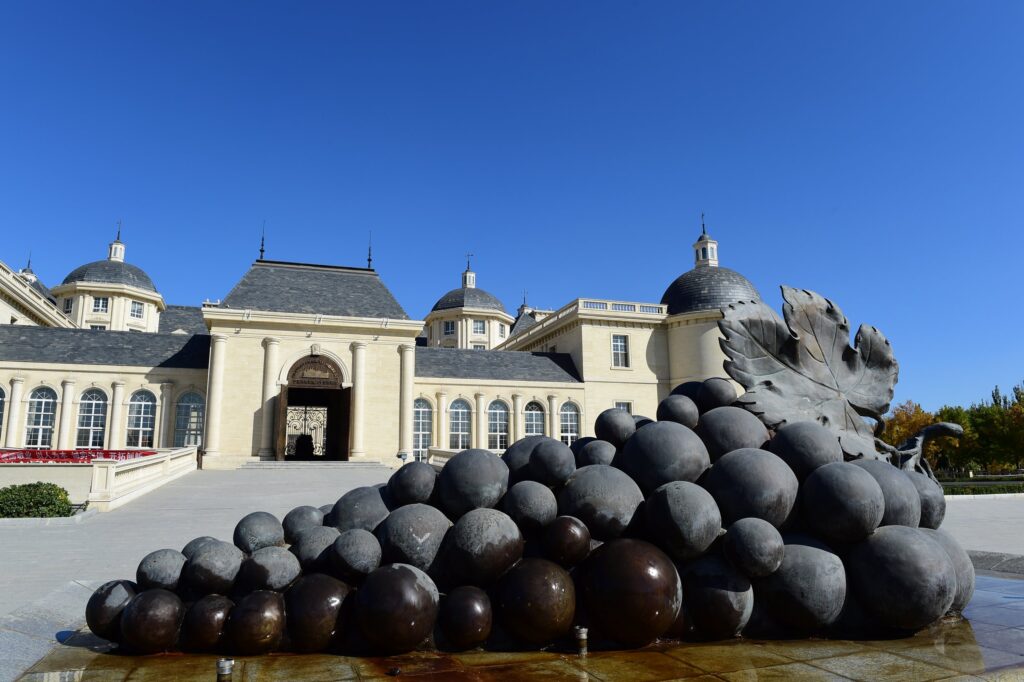
4. The Chinese Wine Market: Growth, Challenges and Opportunities
China has become one of the most strategic wine markets in the world for the wine industry today.
The ascent of China’s wine market, although slowed by the pandemic and trade tensions, continues to redefine the priorities of international producers — all while fueling the rise of Chinese wines themselves.
4.1. Evolving Wine Consumption Habits
With over 45 million regular wine consumers, China ranks among the world’s top 10 wine-importing countries. In 2024, the Chinese wine market is estimated at $26.8 billion, with a total consumption of 1.65 billion liters.
But current trends are becoming clear:
- Premiumization: Chinese consumers are gravitating towards higher-quality wines, whether imported or local.
- Growing interest in specific grape varieties (Cabernet Sauvignon, Marselan, Chardonnay).
- Rise of e-commerce and wine education (online courses, WSET certifications, etc.).
4.2. Chinese Wines Gain Credibility
Once considered mere copies of great European vintages, wines made in China are now appearing on the finest tables and in international competitions:
- Top-tier competition: Ao Yun and Long Dai now rival prestigious Bordeaux wines.
- Critical acclaim: Critics from Decanter and Wine Advocate regularly praise wines from Ningxia, Shangri-La, and Xinjiang.
- Wine tourism boom: Wine tourism is growing around major estates, supported by local authorities.
4.3. A Professional Sector Seeking Recognition
The Chinese wine industry now needs qualified professionals — sommeliers, consultants, buyers, producers, educators — which explains the growing interest in international certifications like the WSET.
Trained professionals are better equipped to:
- Advise local and international clients,
- Showcase local terroirs and wines,
- Work in emerging wine regions,
- Become ambassadors of Chinese wine around the world.
Conclusion: China, a New Wine Giant to Discover
Chinese wines are no longer just a curiosity; they have established themselves as a new force on the global wine scene.
With its spectacular terroirs, well-adapted grape varieties, ambitious estates, and international investments, China is developing a distinct wine identity — one that deserves to be explored with both seriousness and curiosity.
Whether you’re a curious enthusiast or a wine professional, it’s time to take a fresh look at Chinese wines and explore this still little-known richness.
In summary, here is why you should pay attention to Chinese wines:
- Diverse terroirs: From arid deserts to Himalayan mountains, China offers a unique palette of terroirs.
- Innovation: Chinese wineries aren’t afraid to experiment, blending traditional and modern techniques.
- Aging potential: Some Chinese wines, notably from Ningxia and Yunnan, show excellent potential for aging.
- Accessibility: More and more Chinese wines are available for export, allowing wine lovers around the world to discover them.
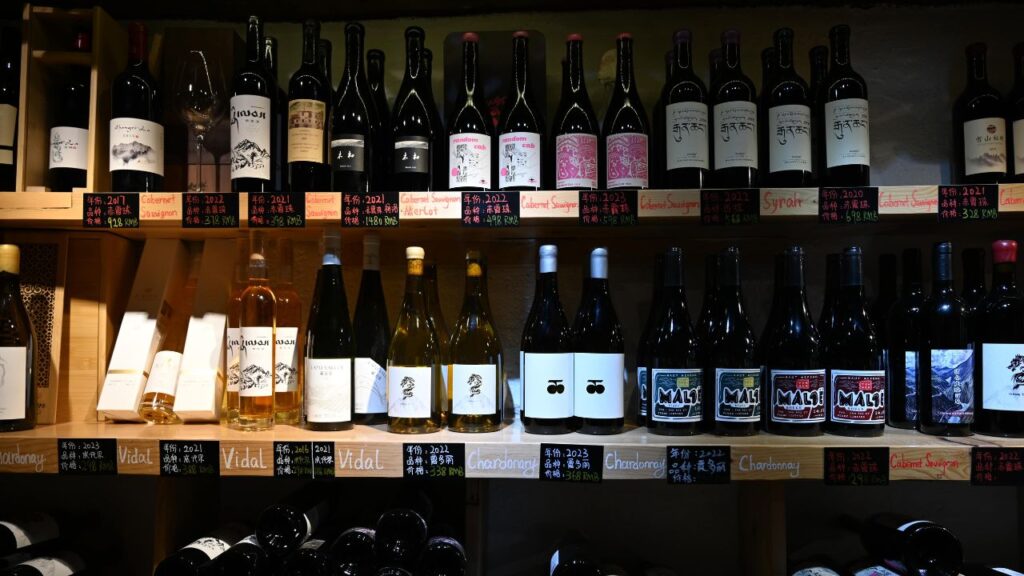
👉 Are you passionate about wine?
Do you want to understand the wine styles of the world, including those of China?
The best way to structure your knowledge, train in professional tasting, and gain international recognition is to pursue WSET certification.
At Weeno, we offer:
- WSET wine courses (Levels 1, 2, 3)
- Flexible learning: In-person in Paris or Marseille, or 100% online
- Exclusive resources: Access to tasting kits, exclusive materials, quizzes, and personalized support
Discover our upcoming sessions and join an international community of passionate enthusiasts and professionals 👉 weenodrinksacademy.com
